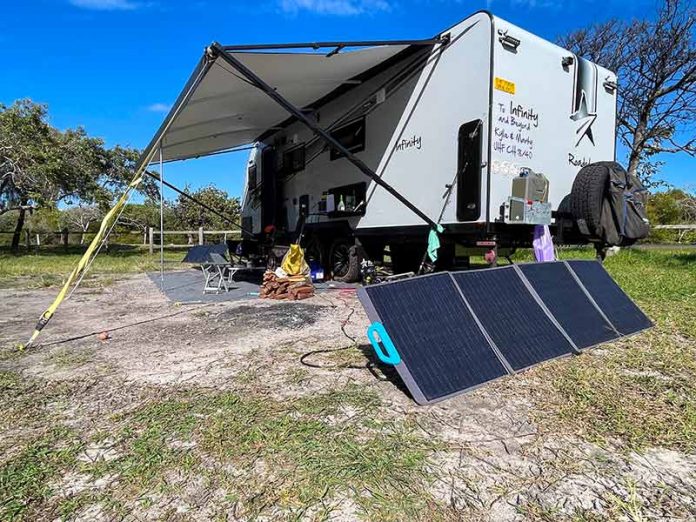
The introduction of lithium batteries into the Australian RV industry has allowed RV manufacturers to develop sophisticated, highly capable electrical systems that allow travellers to take more appliances and technology on the road with them. But even with the best battery management systems, owners still struggle to understand how their systems work and how to manage their power effectively. I know as I have been there, and I think I know the reason why.
We’ve always looked at 12V power systems in terms of ‘amps in’ and ‘amps out’, but that is only half of the equation. This article will explain why understanding your electrical system and managing power usage is a case of forgetting about amps and focussing on watts.
WHAT’S A WATT?
A watt is a unit of power used to qualify the rate of energy transfer. That may sound like a mouthful but think about those last two words: energy transfer. Everything about your RV’s electrical system can be described in terms of energy transfer. A battery charger transfers energy from the power grid into your batteries to be stored and used later.
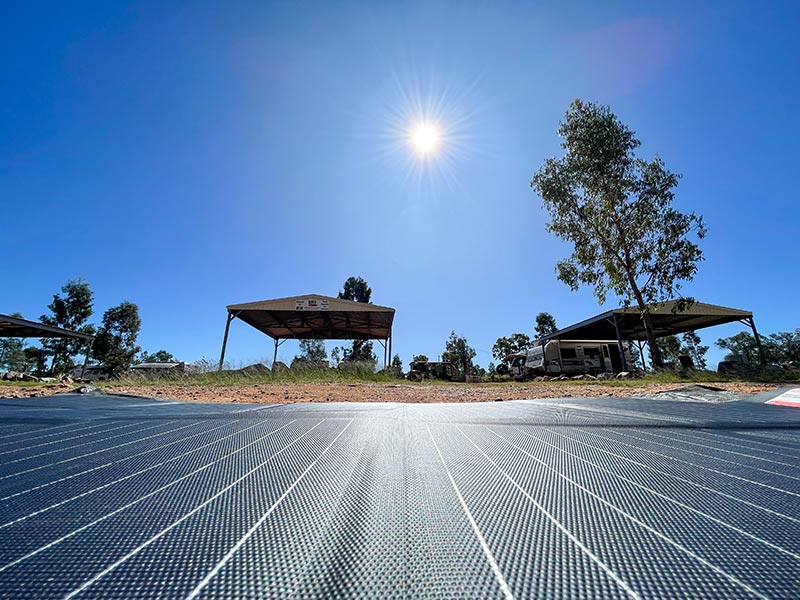 Similarly, solar panels transfer energy from the sun into a solar controller to recharge your batteries. When you turn on a light, it works by transferring stored energy from the batteries, through the wires, into a diode, which emits energy in the form of photons or light.
Similarly, solar panels transfer energy from the sun into a solar controller to recharge your batteries. When you turn on a light, it works by transferring stored energy from the batteries, through the wires, into a diode, which emits energy in the form of photons or light.
Think of a watt as you would a litre of water. You can fill a large water tank from a mains tap or by capturing rainwater and channelling it into the tank. That water can then be used to water a garden by connecting a hose and sprinkler to the tank. The tank will hold a certain amount litres of water and the rate at which you fill it and empty it will determine how quickly you will fill it or empty it.
WHAT’S WATT’S LAW?
Watt’s Law defines the relationship between power, voltage and current. It is the key to understanding how your RV electrical system works at the most basic level. Watts Law states that Watts = Volts x Amps.
So if you have a 12V, 25A battery charger, using Watt’s Law we can calculate how many watts it will put into your battery. Twelve volts multiplied by 25A equals 300W. It’s that simple!
USING POWER OVER TIME
Any device’s watt rating is essentially how much power it will use at any one moment in time. However, we need to look at power consumption over time to know, for example, how long our batteries will last using a certain load.
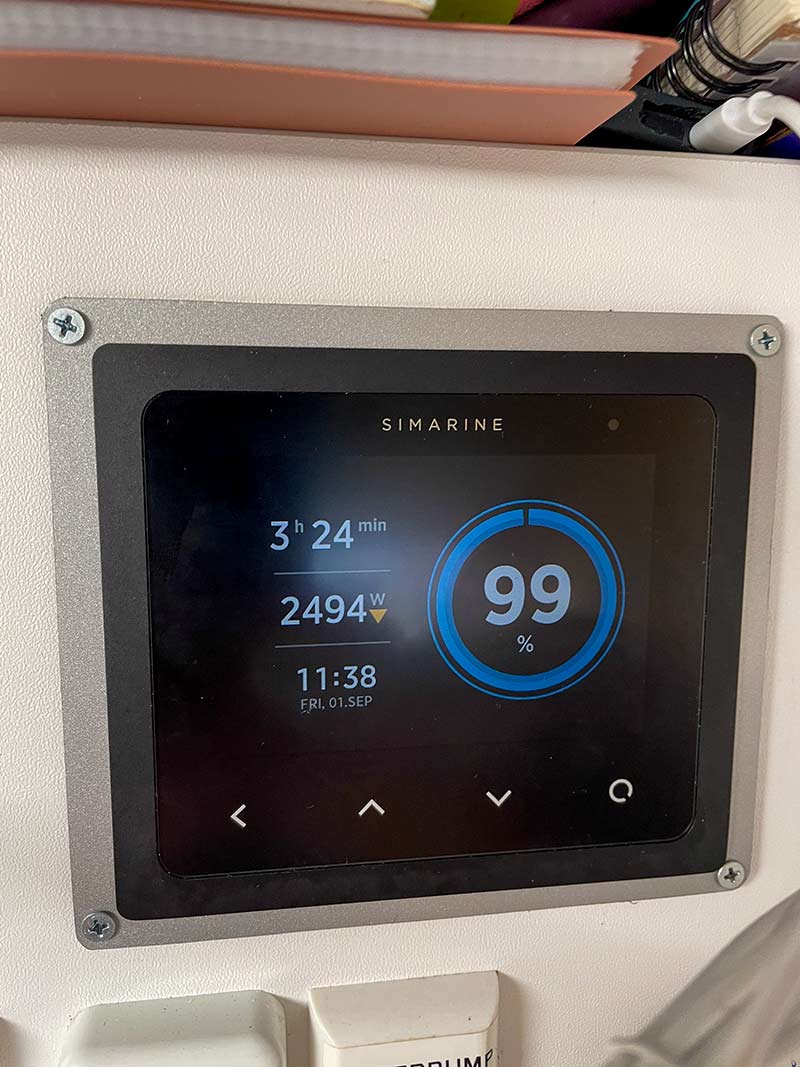 To do that, we refer to a watt as a watt-hour (Wh). So a 10W LED light will consume 10Wh per hour. Going the other way, we know a 25A battery charger will output 300W. Expressed over time, that’s 300Wh per hour going back into our battery.
To do that, we refer to a watt as a watt-hour (Wh). So a 10W LED light will consume 10Wh per hour. Going the other way, we know a 25A battery charger will output 300W. Expressed over time, that’s 300Wh per hour going back into our battery.
BUT BATTERIES ARE RATED IN AMP HOURS
To account for the fact batteries are rated in amp hours, we use Watt’s Law again. To calculate the watt-hour capacity of a 100Ah, 12V battery, we apply our formula: 100Ah x 12V = 1200Wh of battery capacity. Everything is rated in watts.
Hopefully, now you can see where this is all leading. Except for your batteries and battery chargers, every other appliance in your RV will likely be rated in watts. Solar panels, microwaves, generators and inverters. The one thing that changes is the voltage.
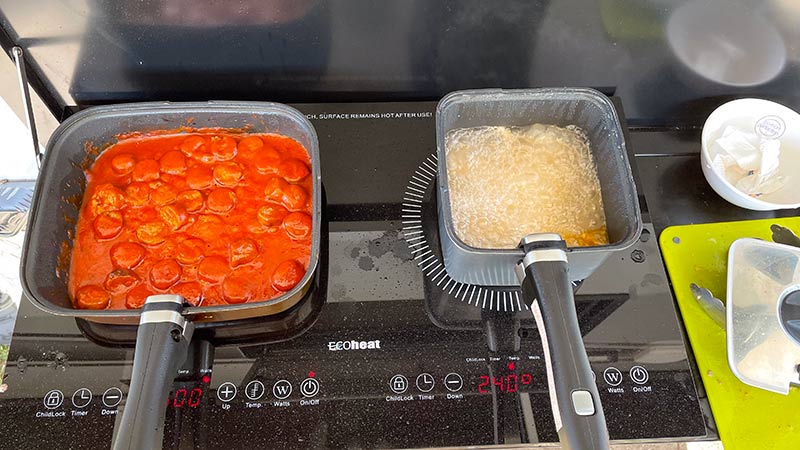 Solar panel voltages will vary depending on the type but most used in RV applications will range between 17 and 25V. Household-style appliances, such as microwaves, air-conditioners and induction cooktops use 240V. General fittings, such as LED lights, the water pump and perhaps your TV will use 12V. If you had to use amp hours as the basis for understanding your RV’s electrical system, you’d have to convert all these individual values. The beauty of using watts is that it remains constant across all voltages.
Solar panel voltages will vary depending on the type but most used in RV applications will range between 17 and 25V. Household-style appliances, such as microwaves, air-conditioners and induction cooktops use 240V. General fittings, such as LED lights, the water pump and perhaps your TV will use 12V. If you had to use amp hours as the basis for understanding your RV’s electrical system, you’d have to convert all these individual values. The beauty of using watts is that it remains constant across all voltages.
Let’s say you have a 100Ah battery connected to an inverter to power a 1000W air-conditioner. How long will the air-conditioner run before the battery is completely flat? Well, if you were relying on amp hours, you would have to figure out how many amps the air-conditioner would draw from the battery after the inverter had converted the voltage from 12V to 240V. While it’s possible to do, the method can vary depending on who you talk to and it’s prone to errors.
This is why working in watts is so easy. The power consumption rate remains constant throughout the process. And we know our 100Ah battery also has a 1200Wh capacity. All we do is divide out battery capacity by the power consumption of the air-conditioner to get a time in hours: 1200Wh battery divided by 1000Wh power consumption equals 1.2 hours of total runtime.
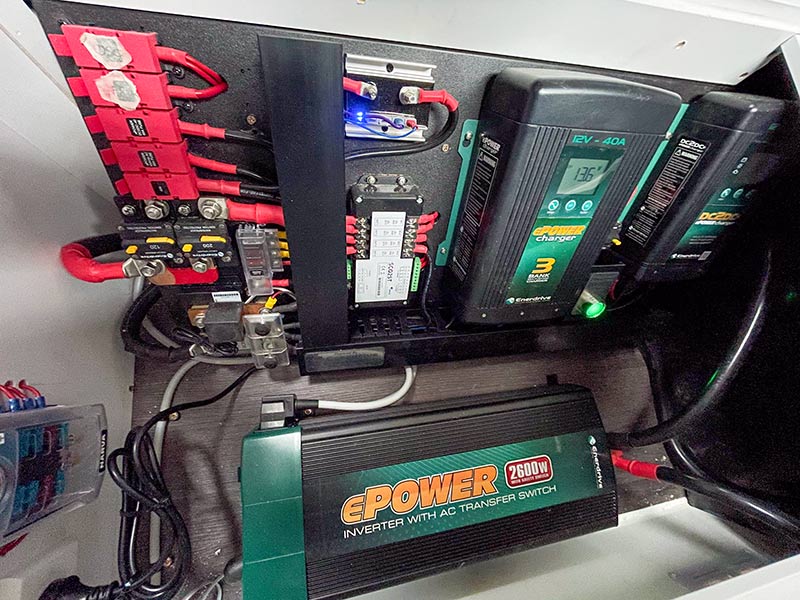 We can also apply the same principle to solar-charging our battery. Let’s say we have a 100W solar panel charging our 1200Wh battery that is at 50 per cent state of charge. That means our battery has 600Wh of remaining capacity. Assuming our solar panel is getting full sun, it will take six hours or six 100Wh (600Wh).
We can also apply the same principle to solar-charging our battery. Let’s say we have a 100W solar panel charging our 1200Wh battery that is at 50 per cent state of charge. That means our battery has 600Wh of remaining capacity. Assuming our solar panel is getting full sun, it will take six hours or six 100Wh (600Wh).
HANG ON – IT’S NOT THAT SIMPLE
It’s around this time that all the electrical experts reading this will say that I haven’t taken into account a variety of factors.
Voltages are not a constant 12V and there are system inefficiencies, such as power losses through heat and resistance in the wiring. And then there’s the fact that solar panels rarely ever produce their rated output and, even if they did, it wouldn’t be constant throughout the day thanks to the changing position of the sun, not to mention cloud cover or shadows cast across them at certain times of the day.
I acknowledge all of this but, for sizing and operating modern RV electrical systems, breaking everything down to ‘watts in’ and ‘watts out’ will suffice for most owners.
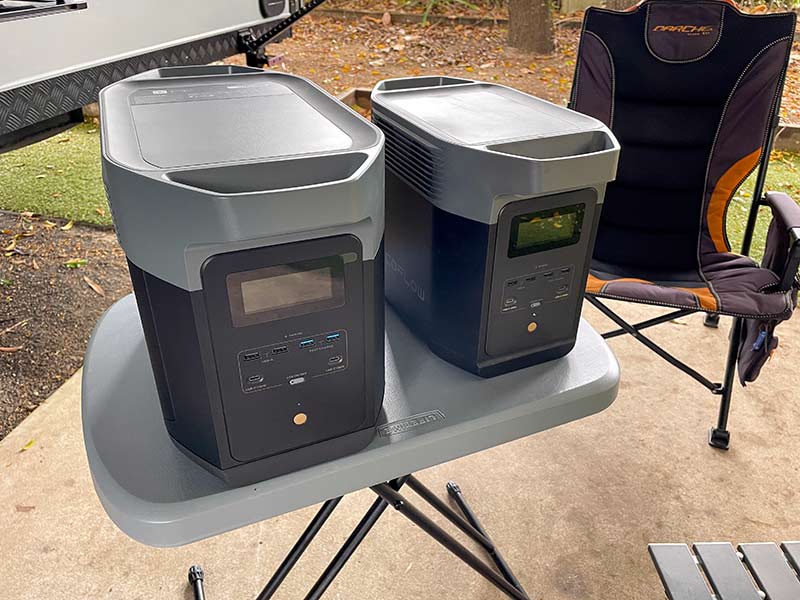
To address some of these issues, my recommendation is to use this article as a general guide and perhaps make a few assumptions, such as:
- If you have 500W of solar panels on the roof of your RV, make your calculations based on them making 400W and less in the winter months;
- Battery chargers will lower the charge rate as a battery gets to about 90 per cent state of charge. When calculating recharge times, add an extra hour or two to take this into account; and
- Remember that, as a rule, batteries do not like being fully discharged, especially older technology batteries like lead-acid or AGM batteries. Lithium batteries can sustain deeper discharge rates but will benefit from a limit of 10 per cent state of charge. Most quality battery management systems will include an automatic cut-off to prevent over-discharging. It will help to know what this is and adjust your available capacity calculations accordingly.
To assist, most RVs fitted with modern battery management and electrical systems will be supplied with a power monitor of some description that will display power movement in terms of watts. They may even provide your battery’s time remaining based on the size of the battery and any discharge limits set in the system.
DUTY CYCLE
Not all electrical devices run continuously. Many, like fridges and air-conditioners, are set to operate at a certain temperature and they maintain that by periodically switching on and off. This is called a duty cycle. It means that, even though a device is rated at, say, 1000W, it may only operate at half that in watt hours over time.
This will vary depending on the conditions and the device settings. Estimating their actual power usage over time is almost impossible. My advice would be to use 75 per cent of their rated output as a safe estimate.
Therefore, when calculating the power consumption of a caravan fridge rated at 100W, assume a duty cycle of around 75Wh.
REAL WORLD USAGE
This is all good in theory, but how does it work in the real world? Again, this is a great question. When we look at the overall operation of our electrical system, we see the benefit of breaking everything down to watts.
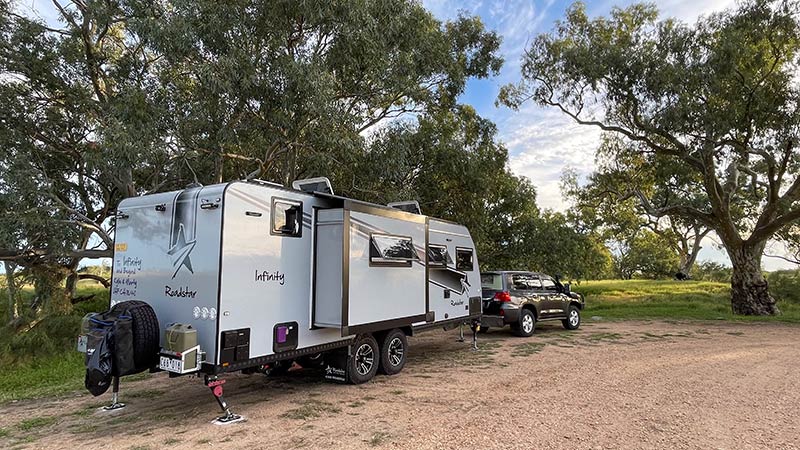
When you’re free-camping in your RV, power will be flowing in both directions. You will have power going out of your battery to operate your appliances, and you will have power coming in from your solar panels or perhaps a generator running your battery charger. Depending on the situation, you will have a net power flow either to or from the battery and, knowing this, you can estimate how much time you have left to either recharge or flatten them.
Going back to our 100Ah battery, which we have already ascertained is a 1200Wh battery, running a 1000W air-conditioner while simultaneously receiving 500W of solar charging, how long will the air-conditioner run before the batteries run flat?
We calculate our net charge/discharge rate by subtracting the solar panel charge from the load usage: 500Wh minus 1000Wh equals 500Wh net discharge.
So 1200Wh divided by 500Wh equals 2.4 hours before the batteries go flat, almost double the runtime without factoring in any recharging.
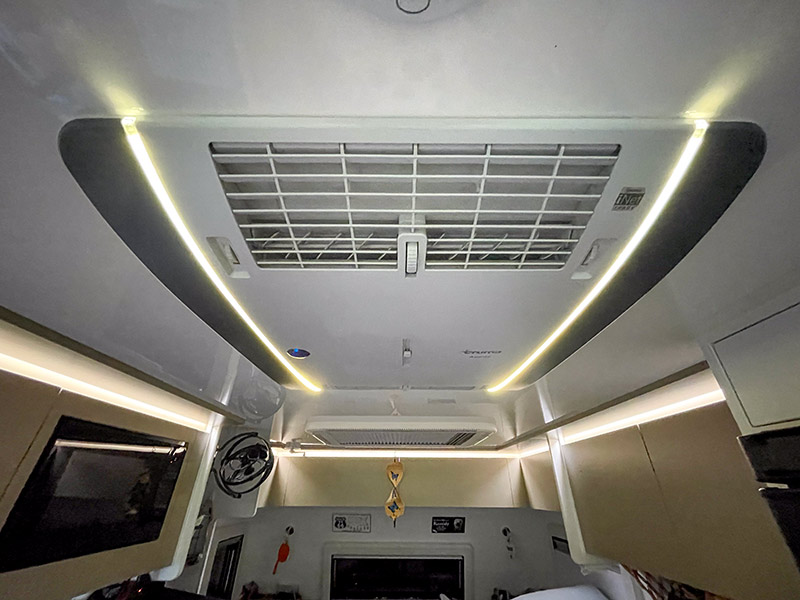
Now if you take into account some variation in solar charge rates and the fact that the air-conditioner will cycle on and off as the thermostat kicks in, you may be able to extend that runtime or it may reduce depending on the conditions. Further, if you have lithium batteries set to cut off at 10 per cent state of charge, you could reasonably rely on an estimate of around two hours of runtime.
SUMMING UP
Remember, we are not trying to calculate our battery capacity and runtimes to the last minute. Apart from anything else, doing that level of detail is just tedious and, in my opinion, stressful.
Breaking everything down to watts and watt hours, however, gives you a very good overall picture of what your electrical system is doing and all it requires is simple mathematics you can do in your head or on your phone’s calculator.
It will help remove much of the anxiety owners get when camping off-grid, especially when using all the creature comforts modern RVs allow you to have away from home.





